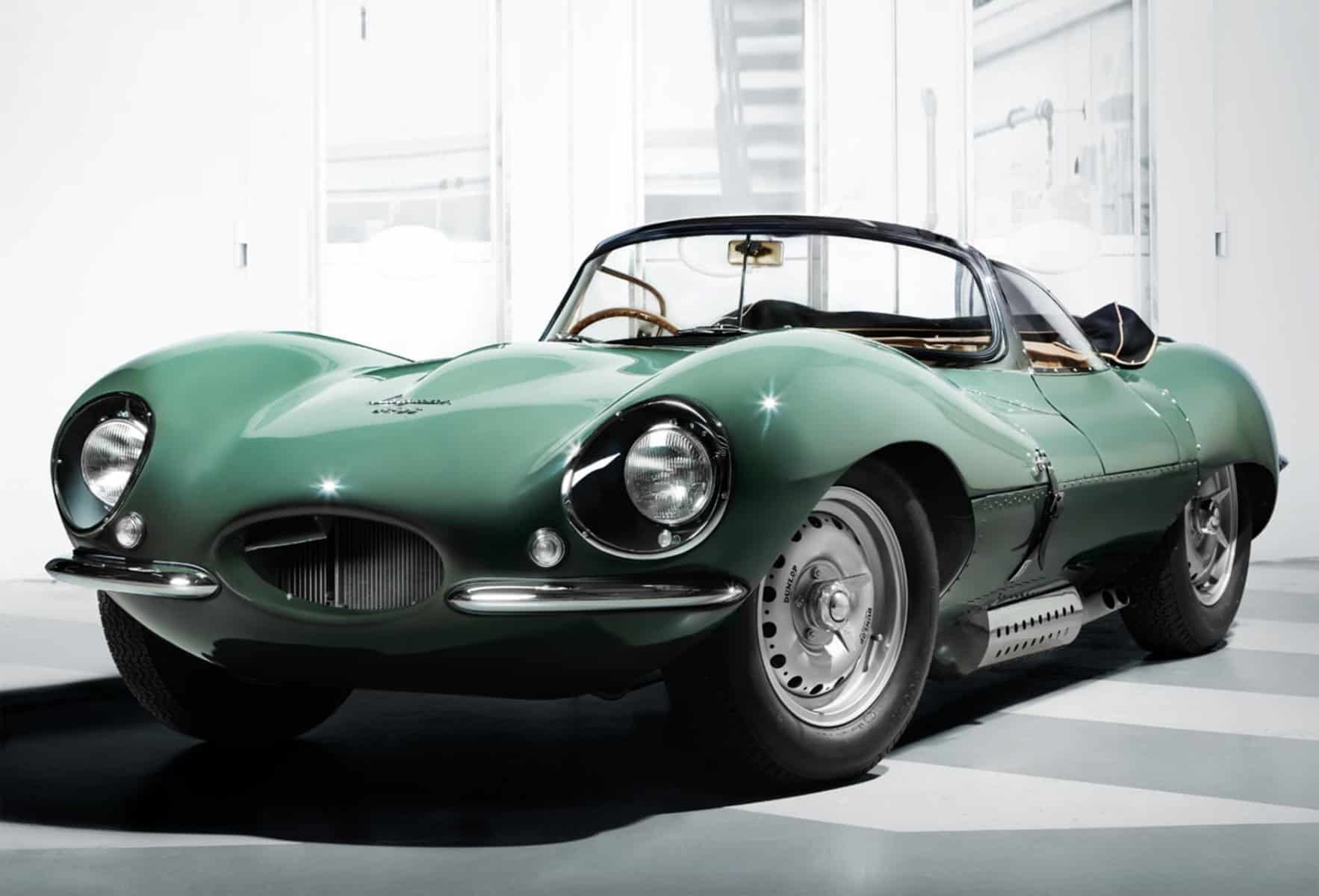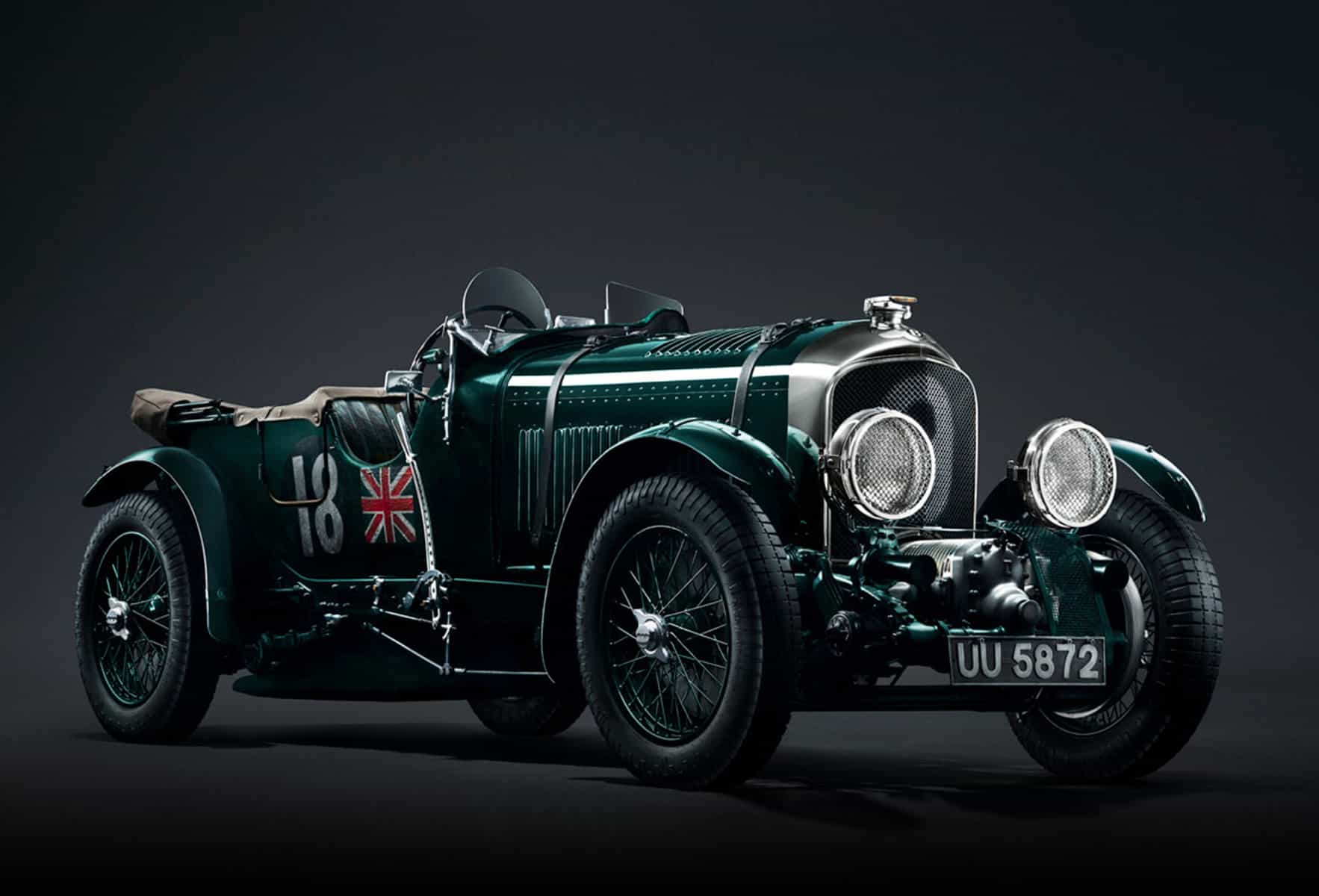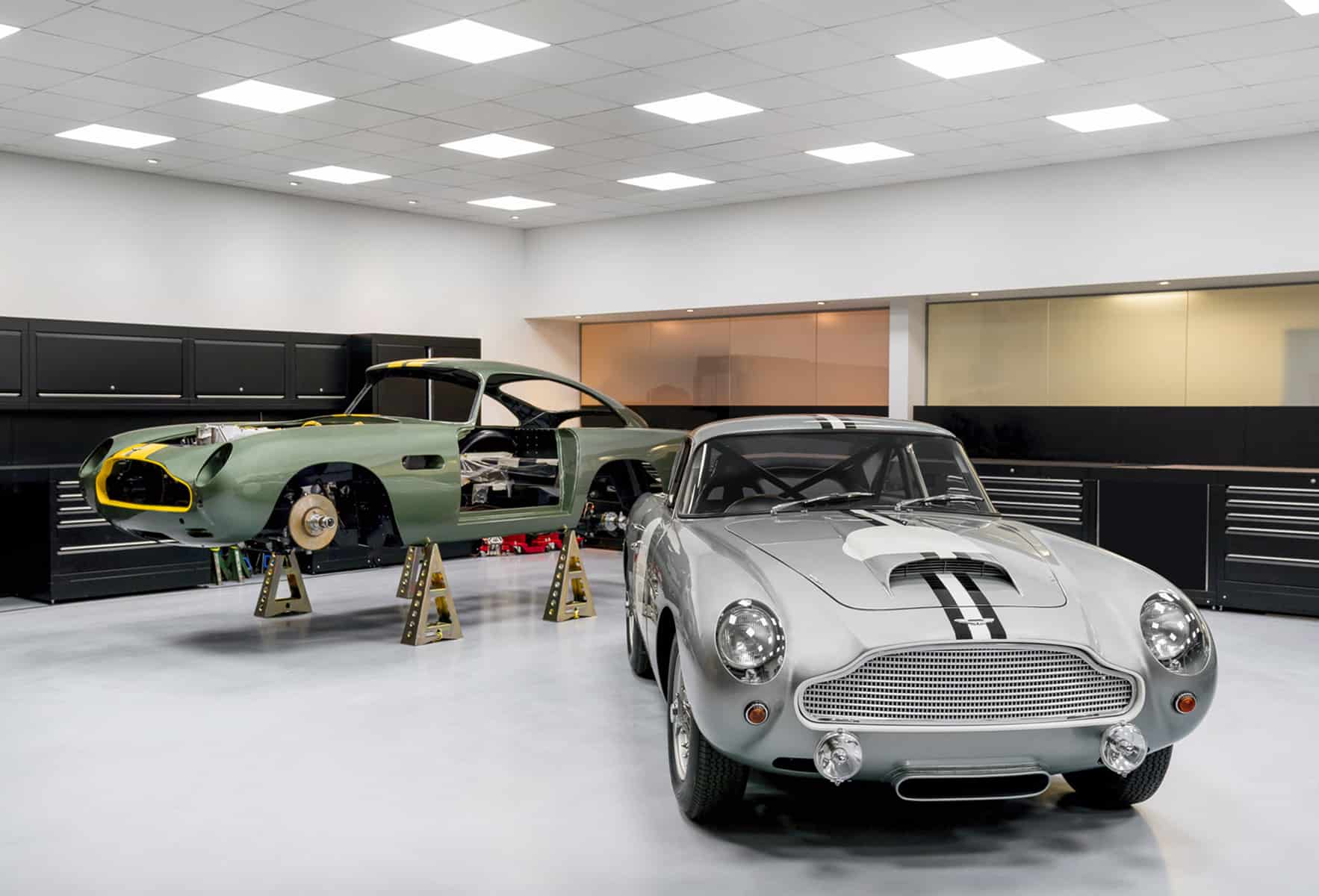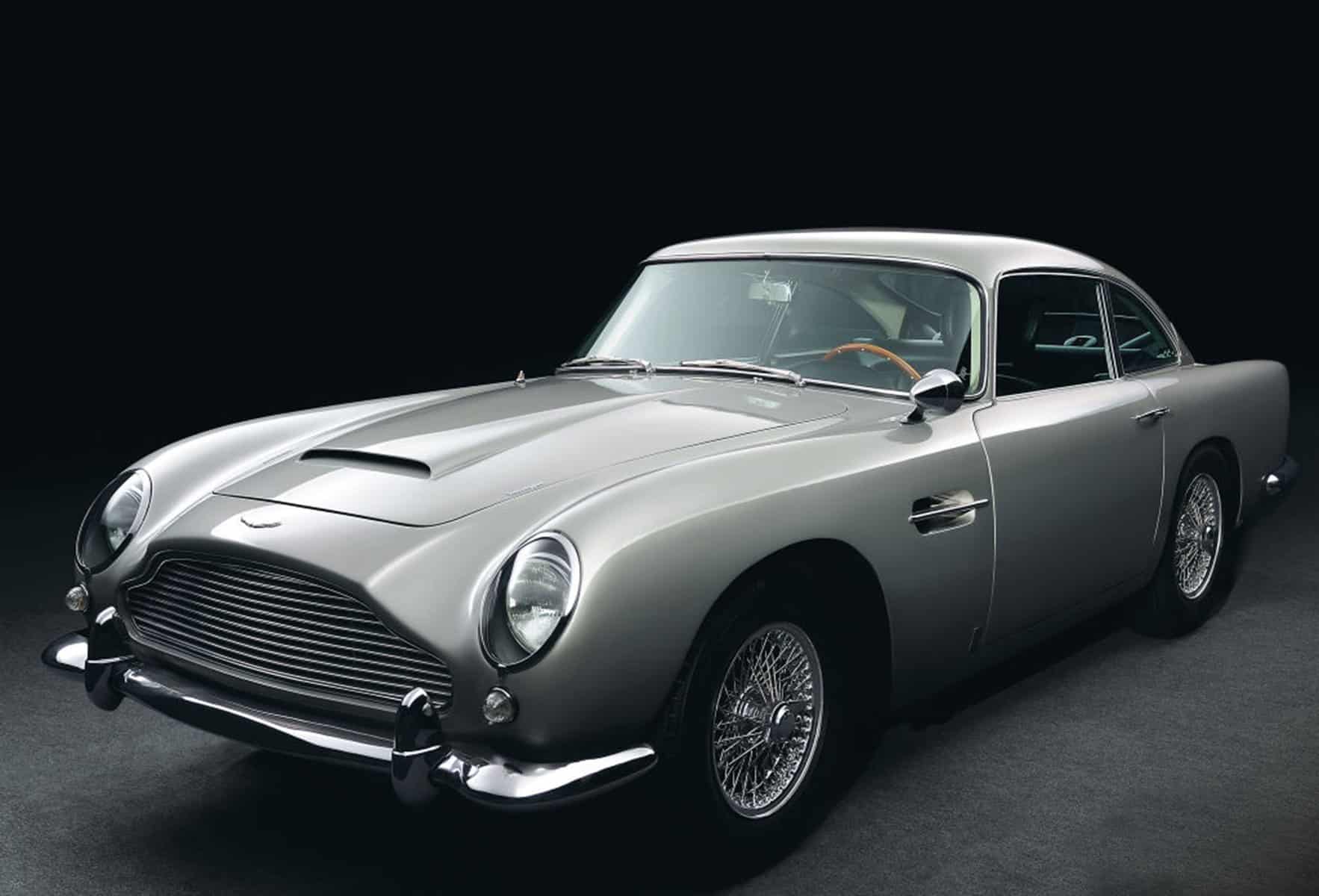Back to the Future?
The debate over continuation cars heats up
BY: KEN GROSS
Continuation cars – newly recreated replicas built or underwritten by their original manufacturer — made the news again when Jaguar Classic announced it was building eight exact copies of its C-Type Le Mans-winning sports racing roadster, ostensibly to celebrate the C-Type’s seventieth anniversary.
Although these recreations are offered at seven-figure sums, Jaguar is also touting its dedicated online configurator, a first for a ’50s-era car. So, whether you have the cash or not, you can always pretend – and choose “your” C-Type’s exterior and interior colors, numerical trim, and even spec whether it has the Jaguar badge fitted – all online. Jaguar’s planning a special event for the new owners in 2022, when the cars will all be completed.
Although they’re not as literally hand-crafted as the originals – for example, some alloy components are CAD confirmed and machine-stamped — the new cars are dead nuts accurate. Jaguar Classic says its engineers “…consulted the Jaguar archives and cross-referenced scan data taken from an original C-Type in conjunction with the latest computer-aided design technology to create the most authentic new C-Type possible.”
They’ve done this before, with limited runs of Jaguar’s legendary 1955 D-Type, the 1957 XKSS, made famous by Steve McQueen, and its 1963 E-Type Lightweight. Earlier, Bentley announced it would build a dozen examples of its vaunted 4.5-liter “Blower” Tim Birkin team cars, and Aston Martin has painstakingly recreated the DB4 GT, the DB4 “Zagato,” and the silver “007” DB5 of James Bond.
In a few cases, the OEMs have enlisted the aid of crack British specialists like R.S. Williams and Crosthwaite & Gardiner. The latter built a small number of Auto Union C-Type and D-Type pre-war “Silver Arrows” for Audi. But make no mistake, it’s the manufacturers who are initiating and officially blessing the efforts, not the suppliers.
Purists scoff (for the most part). Noted international rare car dealer Simon Kidston, writing in Sports Car Market, reported that in the case of Bentley, an esteemed group of “Blower” owners including Ralph Lauren, William E. “Chip” Connor, Lord Bamford, and Evert Louwman protested Bentley’s foray into the replica business, writing Bentley’s CEO and urging the company not to “squander time, funding, energy, and the Bentley brand’s reputation” on these cars “as that would serve only to dilute that special admiration and awe that can only come from viewing and embracing the genuine article.”
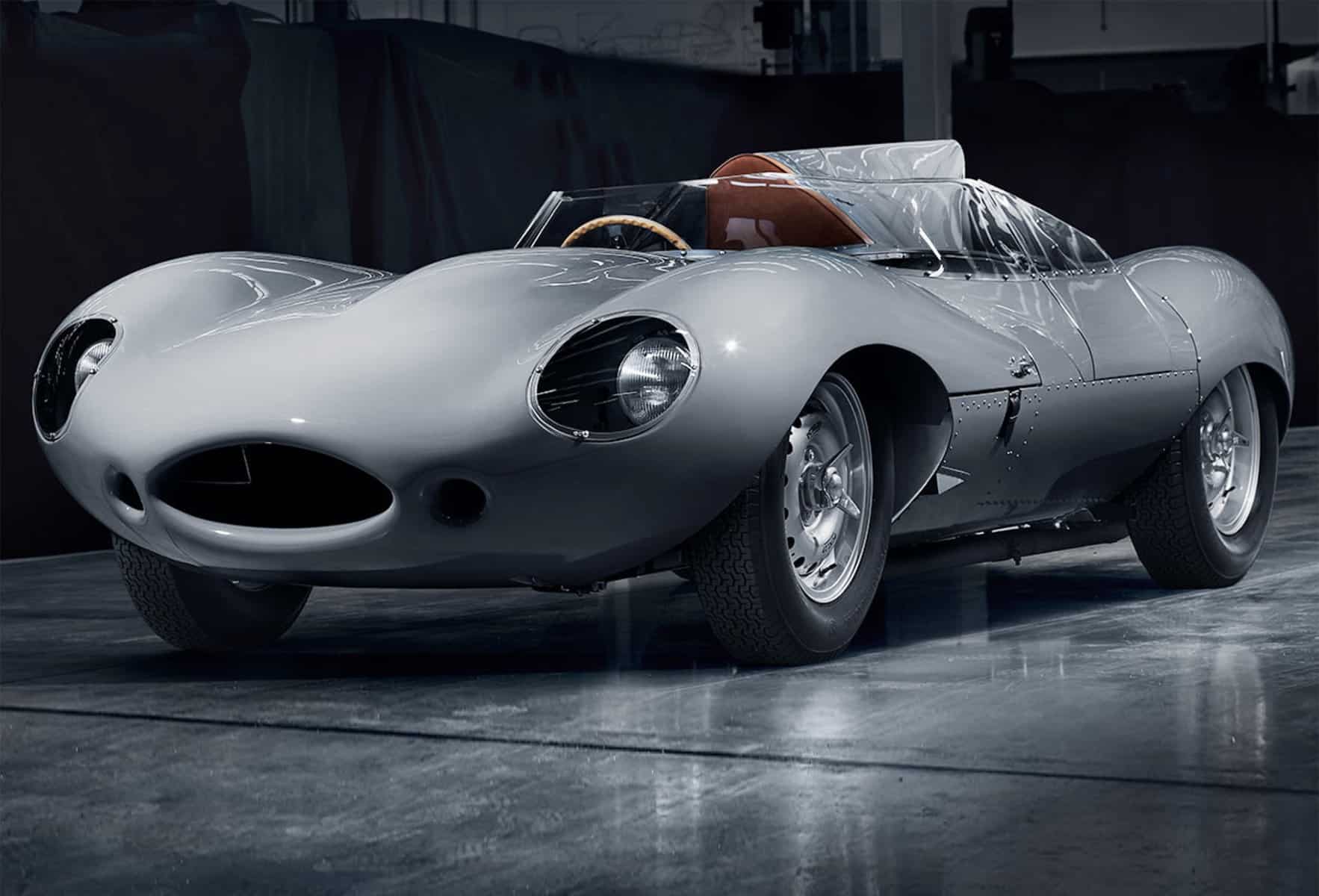
Bentley’s response was respectful, but the company’s minds were made up. In the meantime, other wealthy enthusiasts, who aren’t quite able to obtain the real thing, have lined up, checkbook in hand — and these editions are often quickly sold out. Values seem to be holding up. At the RM/Sotheby’s Elkhart Auction last October, bidders cheerfully paid in excess of seven figures apiece for several barely used, pre-owned Jaguar Classic continuation cars.
Expert opinions are mixed. Miles Collier notes: “Continuation cars are replicas built by the original manufacturer. They are still replicas. While they are very close to the originals in configuration, they have noticeable differences driven by necessary perceived quality, for example. Properly, these commemorative efforts fall somewhere between third party replicas, say a Proteus (aftermarket) C-Type Jaguar, and the real thing.”
Then why do some wealthy enthusiasts buy them?
“These cars represent a recreation of the phenomenon or the experience of the original automobile,” Collier explains. “As such, they offer opportunities for use where the original, precious artifact should not be risked. Personally, I have no problem using these things as “stunt doubles” in historical car racing for example. Are they the real thing, just built later than the original production run? No. They are commemorations by the manufacturer — modern reinterpretations.”
Miles Collier believes there’s a place for these manufacturer-built copies at vintage racing events (vis a vis, re-creations built by individuals) in the future. But he opines they should not appear at Concours d’Elegance “… where original fabric should be important. They would be more difficult to classify with respect to tours such as the Colorado Grand,” he adds. “To my mind, continuation cars’ acceptability goes to the degree of risk to which they will be subject. For ‘no risk’ events like concours, they are unacceptable. For ‘high risk’ events like racing, they are fine.”
Connecticut-based Jock De Camp, a noted broker/purveyor of collector cars, says, “An official Carroll Shelby Enterprises continuation Cobra is much closer to being a real car than an ERA or a Kirkham, so it’s worth considerably more,” “You can buy these new cars and use them. You’re not going to take a real D-Type to Home Depot.”
Keith Martin, founder/publisher of Sports Car Market, is sanguine. “Let’s be clear that the driving force behind factories building ‘certified’ replicas of their iconic models is financial,” he insists. “If they didn’t think they could make money doing it, they wouldn’t. These are ‘Stepford Wives’ machines,” he adds, “built not to be used in anger with drivers aspiring towards a podium finish. They are built as a shiny confection to be played with, the way a cat plays with a toy.”
Bill Warner, founder and chairman of the Amelia Island Concours, adds, “I’ve often said that I never wanted a car I had to explain or apologize for.” Warner notes that “…continuation cars offer enthusiasts, who want to see and hear the car as it was in the Fifties, an opportunity to do so. There are those out there (not me) with the wherewithal who will find these cars very attractive and desirable. Even continuation cars are unaffordable for most,” Warner hastens to add, “but if you can’t afford a real C-Type, D-Type, XKSS, or any number of continuation cars, this is the answer.”
“Is there a place for them at The Amelia?” Warner doesn’t hesitate: “Not while I am in charge.” Will there be one in the future? “Possibly, but with the caveat that they are continuation cars. I see a time when the “real deal” could be exhibited with the continuation.” Does being built by the manufacturers make it “real”? “In my opinion, no, as you can’t make history or construct provenance, and therein lies the rub.”
Keith Martin adds, not without humor, “Once we have concours fields exclusively for replicas, these cars will be welcome. Until then, they should be relegated to the, ‘I can’t afford a real one, but I have a certified one instead’ corral.”
Murray Smith, chairman of the Lime Rock Park Historic Festival, believes “…there are issues to bear in mind when we are evaluating whether or not these cars should be encouraged — is the original car really rare; what will the continuation car be used for: and how will it be recognized? It is imperative,” he thinks, “that the new series be clearly defined as such by the chassis number or in the case of a ‘new’ race car by a prefix on the race number used in competition. The fact that the majority of pre-war Grand Prix Mercedes-Benzes and Auto Unions that we see running today are made in an old pig farm in rural Sussex rather than Stuttgart-Untertürkheim (he’s referring to Crosthwaite & Gardiner) doesn’t really affect the experience. And we (enthusiasts) would never have had the chance to see a (priceless and all but extinct) D50 Lancia or an Alfa Tipo 158 in full cry, unless an eccentric enthusiast hadn’t invested a great deal of time and money in recreating them.”
Murray agrees with Keith on the true raison d’être. “When it comes to Bentley, Aston Martin, and now Jaguar, building new C-Types, D-Types, DB4 GTs, and ‘Blowers,’ one can probably assume that the profit motive is foremost in the mind of the people who run those companies. And if they are true to the originals and if they receive legitimate ID issued by the manufacturers to compete in any form of motorsport, then why not? Many spectators at old car events know the difference between real and fake, and if they are recognized for what they are and for being really well-driven, then so what?”
“Enthusiasts often lament the prices of a real D-Type or C-Type,” Murray Smith adds. “And I would love to own one myself, having experienced the pleasure of racing both cars, but the replicas are not going to be cheap, that’s for sure, so even a genuine ex-works replica will be something to aspire to. We just have to be sure that it is properly identified. And that’s not the case today.”
What’s the future for continuation cars?
Some manufacturers will comb their catalogs looking for short run specialty models that could be profitably reproduced in small numbers. But I predict we won’t see any “new” 300SL Mercedes-Benzes – too many were made. Although they are rarer, BMW likely won’t be re-issuing its lovely 507s either. Toyota could decide to reprise its sleek 2000GT coupe, now a seven-figure classic, of which just 337 were sold. But the criteria for continuations – style, rarity, performance, and lasting fame, will sharply limit future relaunches.
Photo at top of page: Jaguar C-Type continuation car, photo courtesy Jaguar Classic.
